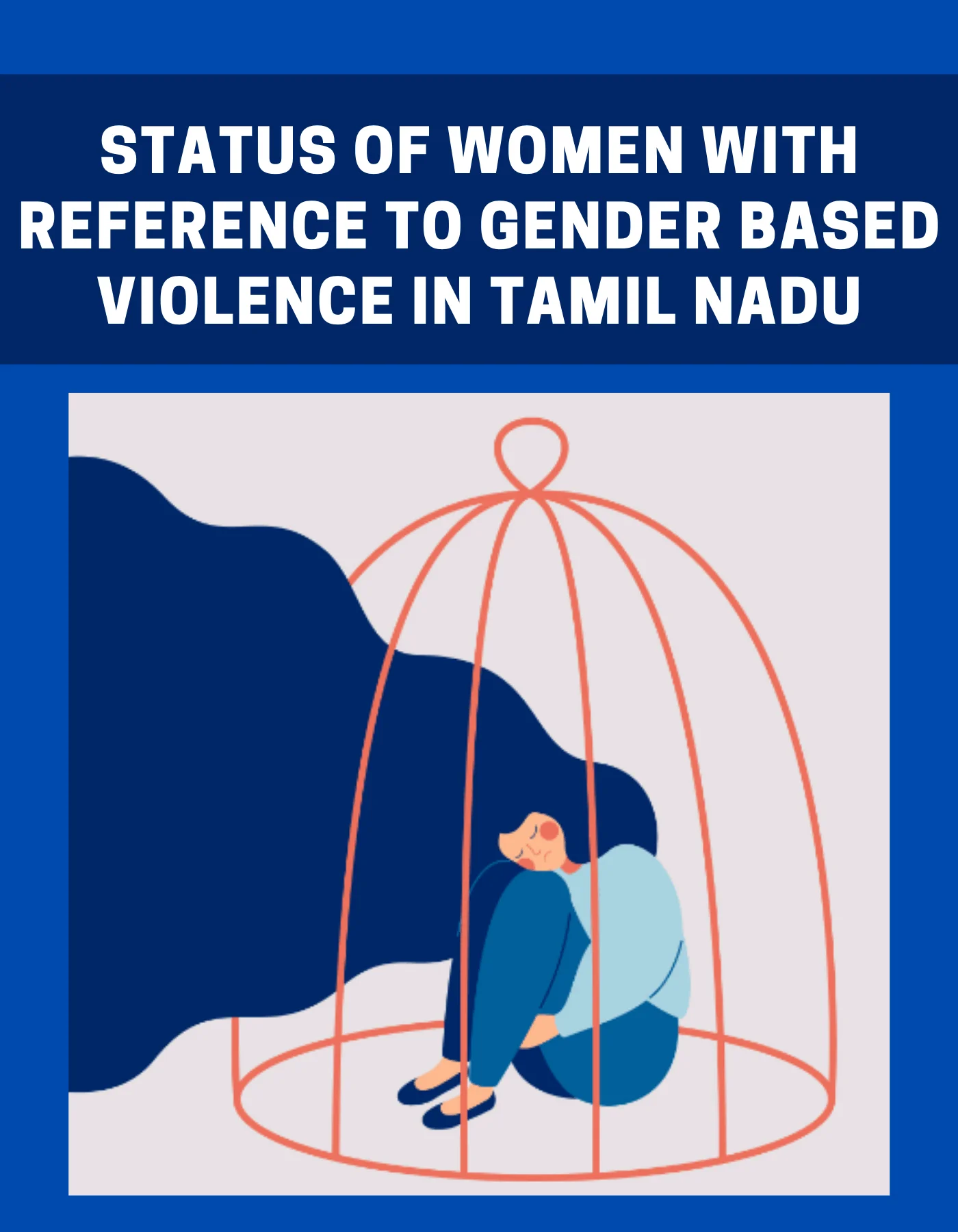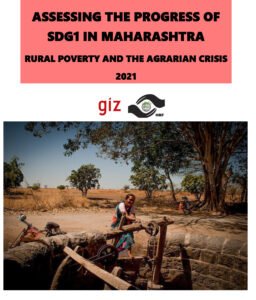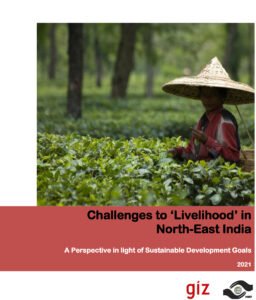Fact sheet: Status of women with reference to gender based violence in Tamil Nadu
Introduction
There is an alarming growth in the cases of violence against women all over the world. Around the globe, at least one woman in every three has been beaten, coerced into sex, or otherwise abused in her lifetime. Most often the abuser is a member of her own family—their husbands, fathers, or brothers and uncles in their homes. Increasingly, gender based violence (GBV) is recognized as a major public health concern and a violation of human rights. One in five women will have experienced rape or attempted rape in her lifetime.
Like most parts of the world, in India too there is continued control of women’s lives by patriarchy, continued discrimination and violence against women caused by traditional patriarchal institutions (e.g.caste, family, religion), state institutions and new economic and cultural institutions (e.g.global markets, global media) generated by globalization.
The national promise
India is party to the sustainable development goals (SDGs). SDG 5 and 16 are relevant in this context.
SDG 5: Gender equality
5.1 End all forms of discrimination against all women and girls everywhere.
5.2 Eliminate all forms of violence against all women and girls in the public and private spheres, including trafficking and sexual and other types of exploitation.
5.9 Adopt and strengthen sound policies and enforceable legislation for the promotion of gender equality and the empowerment of all women and girls at all levels.
SDG16: Promote just, peaceful and inclusive societies:
16.1 Significantly reduce all forms of violence and related death rates everywhere
16.3 Promote the rule of law at the national and international levels and ensure equal access to justice for all
16.5 Substantially reduce corruption and bribery in all their forms
16.6 Develop effective, accountable and transparent institutions at all levels
16.7 Ensure responsive, inclusive, participatory and representative decision-making at all levels
16.10 Ensure public access to information and protect fundamental freedoms, in accordance with national legislation and international agreements.
India has enacted the Protection of Women from Domestic Violence Act, 2005 (PWDVA) which was brought into effect from 2006.
Incidence of crimes against women in 2014
Crimes directed specifically against women and in which only women are victims are characterised as crimes against women. Crimes against women have more than doubled over the past ten years (National Crime Records Bureau, NCRB 2015). Over the past decade, 2.24 million crimes against women were reported: 26 crimes every hour, or one every two minutes. A total of 3,37,922 cases of crime against women were reported in India during the year 2014 as compared to 3,09,546 in the year 2013, thus showing an increase of 9.2% during the year 2014. These crimes have continuously increased during 2010 – 2014 with 2,13,585 cases reported in 2010, 2,28,649 in 2011, 2,44,270 cases 2012 and 3,09,546 cases in 2013. In 2014, a total of 3,37,922 such cases were reported. These include rape 36,735, attempt to rape 4,234, kidnapping and abduction of women 57,311, dowry deaths 8,455, assault on women with intent to outrage her modesty 82,235, insult to the modesty of women 9,735, cruelty by husband or his relatives 1,22,877, abetment of suicide of women 3,734, and the Dowry Prohibition Act 10,050. Data on PWDVA was collected for the first time in 2014 and 426 cases were recorded.
Despite several laws meant to protect women against violence, discrimination and torture, women continue to be treated unequally with regard to wages, land, property, housing, education and health care. They experience sexual abuse in custody, in the neighbourhood, in the workplace and in the home. The condition of young girls is as precarious as that of adult women. They are denied property and are forced to give dowry, failing which dowry harassment and dowry deaths are the norm. Thousands of women face these problems every day and several succumb to suicide due to such inhuman practices. Tens of thousands of young girls are forced into child marriages.
There is widespread prevalence of gender based violence (GBV) including female foeticide (sex selective abortion, SSA), female infanticide, domestic violence, dishonour/stigma killings and violence (including murder) in public spaces. Cruelty by husbands and relatives under section 498-A of Indian Penal Code is the major crime committed against women across the country, with 909,713 cases reported over the last 10 years, or 10 every hour. According to NCRB, 69 per cent of all such cases were disposed off by the police in 2014. The highest number of cases disposed (76 per cent) were those dealing with assault on women with an intent to outrage their modesty (an euphemism for attempted rape) and those related to domestic violence (DV).
A total 923 rape cases were reported in Tamil Nadu, which means 3 per day. The majority of the offenders were known to the victims. NCRB statistics shows that 31,807 (94%) were familiar to the accused, which includes neighbours (10,782), other known persons (18,171), relatives (2,315) and parents (539). The most vulnerable are those aged between 18 and 30 years (15,556) and 14 to 18 years (8,877). In 2014, almost 44 per cent of all affected were in the age group of 18-30 years and one in every 100 was under six years of age.
Financial allocations to prevent VAWG
Lack of adequate funds has remained a major gap in the implementation of the Act. PWDVA was provided with Rs. 200 million in 2012-13. Revised Estimate allocations for 2013-14 show zero allocation and indicate that the scheme launched to operationalise the Act did not take off that year. Renamed SAAHAS, the scheme was allocated Rs. 500 million in 2014. Interventions to address VAW in domestic spaces are missing in the 2015-16 budget. For 2015-16, two schemes of Ministry of Women and Child Development (MWCD), namely One Stop Centre for Women affected by violence with an estimated cost of Rs. 189 million and Scheme for Universalisation of Women Helpline at Rs. 695 million have been approved.
After the horrific Delhi rape case of December 2012, the Nirbhaya Fund was set up with an initial corpus of Rs. 10 billion in Union Budget 2013-14 and aimed at prevention of violence, protection and rehabilitation. Outlays of Rs. 10 billion for the next two years brought it to a total of Rs. 30 billion, though much of it remains unused.
In 2014-15, a proposal by Ministry of Home Affairs to establish an emergency response system to attend to women in distress with an outlay of Rs. 3.21 billion was approved.
Domestic Violence
Domestic violence refers to violence against women especially in matrimonial homes. Psychological violence includes verbal abuse, harassment, confinement and deprivation of physical, financial and personal resources. It is recognized as the significant barriers of the empowerment of women, with consequences of women’s health, their health-seeking behaviour and their adoption of small family norm. Domestic violence is linked to their disadvantageous position in the society.
In India there are close to 15,000 dowry deaths estimated per year. Many are ‘kitchen fires’ and ‘stove bursts’ designed to look like accidents–which curiously affect only young brides who do not pay sufficient dowry.
Violence against women in Tamil Nadu has taken increasingly morbid forms, with stigma killings on the rise (so far 81) in the past three years, with most victims being women. Dominant caste women who marry Dalits are sacrificed by their own parents.
PWDVA is a central Act. It is the state’s responsibility to implement the Act. The states implement the Act depending on the political will. Each state allots a budget for implementing the Act and for different schemes. Tamil Nadu allots Rs 10 million per annum for implementation of PWDVA (2010-11: Rs 10,712,000; 2011-12: Rs 6,093,000; 2012-13: Rs 10,166,000; 2013-14: Rs 1,01,66,000 and 2014-15: Rs 10,166,000). Tamil Nadu has one protection officer per district (except for Chennai which has two).
There are also 45 ‘service providers’ (women’s NGOs) in Tamil Nadu, about two per district, assisting the protection officer (PO) and survivors. These NGOs run the temporary shelters/ halfway home for women in need. Service providers are an important component of the multi-agency response mechanism set up under PWDVA. They are meant to serve as a bridge between the aggrieved person and the POs, the courts, the police and any other services an aggrieved person may need. They are also supposed to provide the aggrieved access to specific services like legal aid, counselling, livelihood support, shelter, medical facilities, etc.
Their duties are to:
Record the DIR and forward a copy thereof to the magistrate and PO having jurisdiction in the area.
Get the aggrieved medically examined and forward a copy of the medical report to the concerned PO and police station.
Ensure the aggrieved is provided shelter in a shelter home if required.
According to the Economic Survey of Ministry of Finance 2014, the implementation of PWDVA remains weak as ‘No special attention is paid to awareness generation and sensitisation of judicial officers, police and general public. Cases pertaining to domestic violence are often registered under general FIR and not specifically under the Act. Also, a large number of cases are unrecorded’.
Problems to be addressed
Violence against women in her family and household is addressed by PWDVA. This Act provides for the protection of the rights of women guaranteed under the Constitution who face violence of any kind occurring within the family and for matters connected therewith or incidental thereto. Insufficient protection officers, failure on the part of the judiciary and police and paucity of basic services and infrastructure are proving to be hindrances in executing this legal provision.
Low awareness
Though PWDVA guarantees justice to women who suffer domestic violence, the Act has not been implemented properly and there is a dire need to raise awareness among people. This Act is to protect the vulnerable. But due to negligence by government, absent or ineffective state machinery and low awareness, the survivors are unable to raise their voice against harassment.
As per the Act, the survivor can directly approach the Protection Officer (PO) for justice. But not a single person has directly approached PO. Most of the time, survivors approach the police and then the police inform the POs. Most often, the cases reach the officials at the last stage of the domestic violence, due to lack of awareness.
It is equally important to generate awareness among other agencies and individuals involved in the implementation of the Act such as medical officers, police personnel, magistrates and service providers. In order to do this, dedicated resources under IEC and training should be allocated.
Indifferent implementation
The experience so far is that the machinery under the Act have not acted the way they ought to have. Hence it is essential to monitor the implementation of the Act, train more activists for sensitization and to do advocacy for amending the existing law.
As per PWDVA the survivor should get protection within 60 days of the registration of a case. The first hearing should be within that 60-day period. Due to the delay by officials it takes a long time.
If implemented in letter and spirit, PWDVA can be very beneficial for the survivors. As per the law, first order should be passed within 90 days. But, due to leniency of officials few cases meet that standard.
Poor recordkeeping
Given the extent of under-reporting of VAWG, there is a need to complement the existing administrative record-based system with periodic household and institutional surveys. Related to this is the need to correct the formats used to capture and present data. Thus, it would be useful to conduct specific and periodic surveys in order to monitor and address VAWG. Further, timely, accurate data should be made available for all age groups, capturing all social categories and up to the district level to ensure comprehensive reporting.
Lack of competent human resource and inadequate infrastructure
The lack of dedicated staff with clearly-attributed roles and infrastructure is another obstacle to effective implementation of the Act. Protection Officers (POs) play a nodal role in facilitating the aggrieved in filing Domestic Incident Reports (DIRs), accessing shelter, counselling and medical assistance.
Infrastructure is inadequate and the funds insufficient to carry out their duties. Lack of infrastructure (separate room to receive women, means of transport, computers) and low salaries have resulted in declining availability and retention of qualified and trained staff. Similarly, proximity to judicial courts has had varying impact on the efficiency of the support mechanisms. Insufficient POs, failure on the part of the judiciary and police and paucity of basic services and infrastructure are proving to be hindrances in executing this legal provision.
Socialisation and taboo
There was widespread hesitation amongst the women to report or prosecute against DV or GBV. The officials too often did not handle DV as a legitimate crime or complaint, but more of a private or family matter. But now this trend has changed and more survivors are speaking up. However, even the ‘educated’ have a problem understanding the language of law and accessing the basic minimum under the legal system or move from their cultural indoctrination. It is difficult for the vast majority of women suddenly to make use of the law successfully. Training, awareness and an adequate psychosocial support system is missing.
—oO(end of document)Oo—
To download PDF
http://www.slideshare.net/HRFnet/2016-factsheetpwdva




